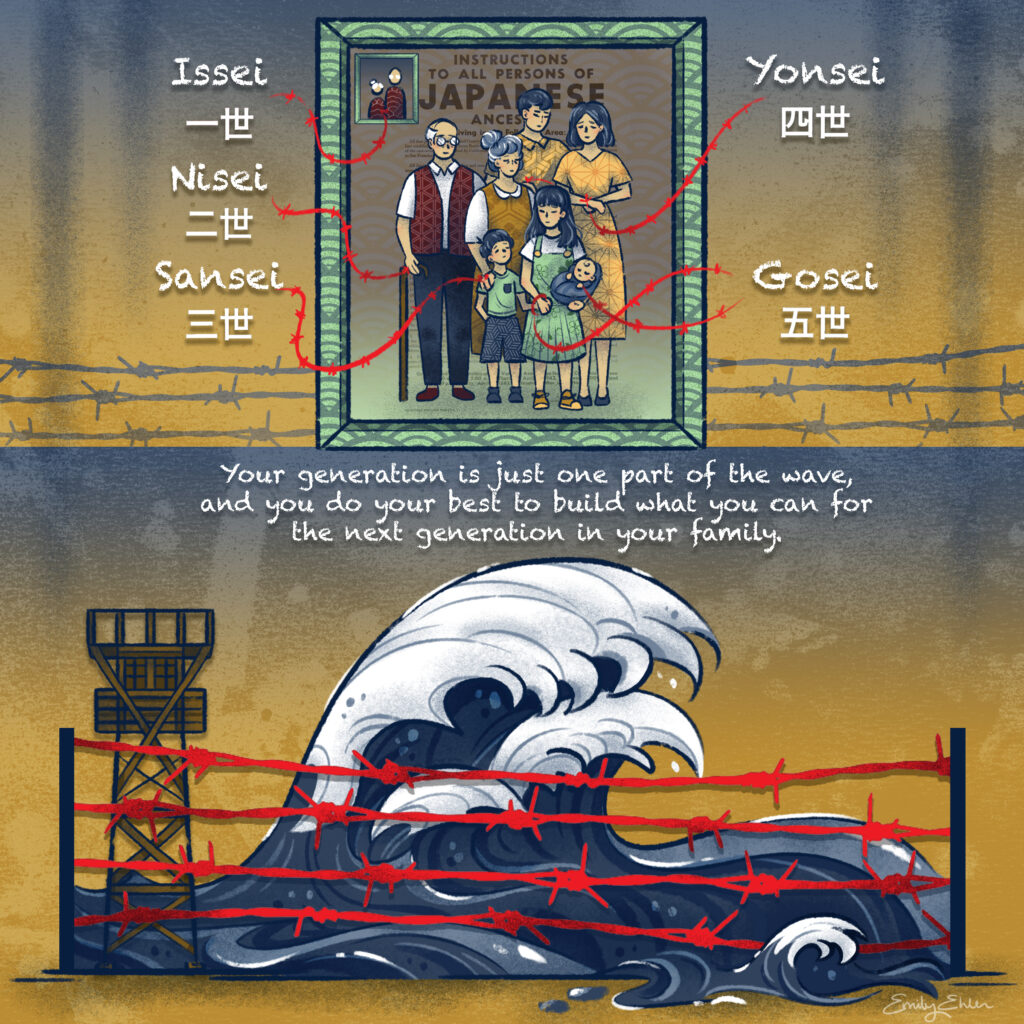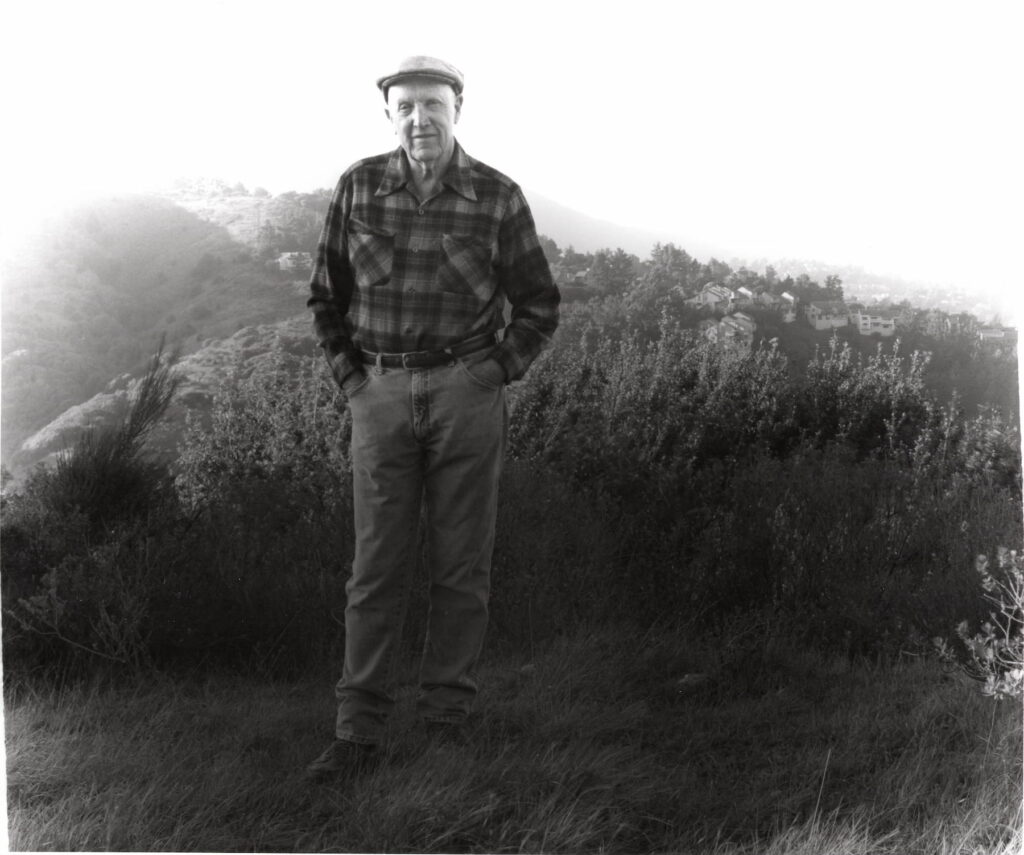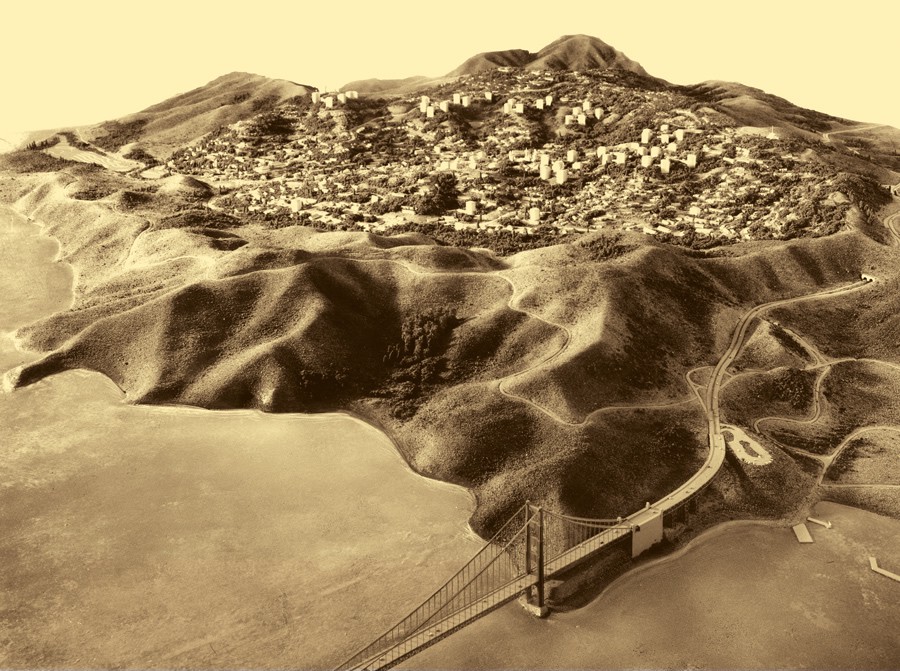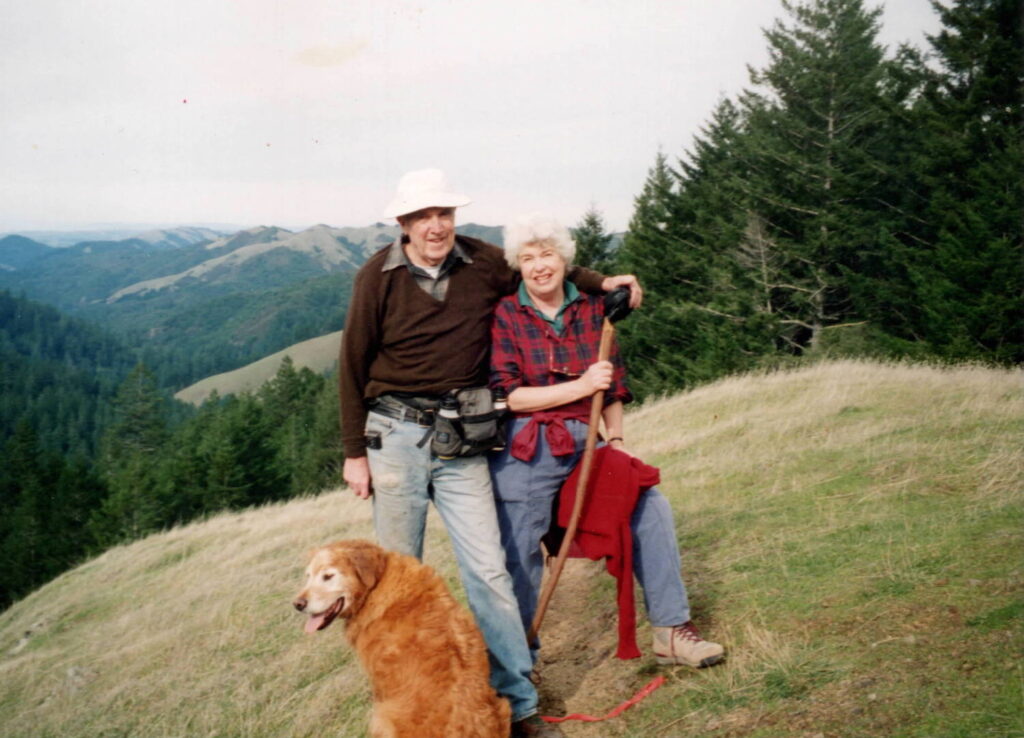Tag: WWII
The Oral History Center Presents the Japanese American Intergenerational Narratives Project

The Oral History Center is proud to announce the launch of the Japanese American Intergenerational Narratives Project, featuring 100 hours of oral history interviews with 23 Japanese American narrators who are survivors and descendants of two World War II-era sites of incarceration: Manzanar in California and Topaz in Utah. The majority of these oral histories are live on the Oral History Center website, where you can learn more about the project and the interviews themselves.
Just a couple of months after the United States entered World War II, President Franklin D. Roosevelt signed Executive Order 9066 on February 19, 1942. This order authorized the government to forcibly remove more than 120,000 Japanese American civilians—even American-born citizens—from their homes on the West Coast, and put them into incarceration camps shrouded in barbed wire and patrolled by armed guards for the duration of the war. This imprisonment uprooted families, disrupted businesses, and dispersed communities—impacting generations of Japanese Americans.
Even as the intergenerational impacts of World War II-era incarceration still touch many Japanese American descendants today, some Americans remain unaware of this history. It was in the spirit of illuminating the wounds of incarceration that OHC interviewers Roger Eardley-Pryor, Shanna Farrell, and Amanda Tewes embarked on this series of oral histories to record the stories of child survivors and descendants. Using healing as a throughline, these life history interviews explore identity, community, creative expression, and the stories family members passed down about how incarceration shaped their lives.
The project began in 2021 with funding from the National Park Service’s Japanese American Confinement Sites Grant. The interviews were conducted remotely via Zoom due to the global COVID-19 pandemic. The OHC team gathered a group of stakeholders with ties to the community to advise the project. Dr. Lisa Nakamura, a clinical psychologist who is herself a descendant of the Topaz incarceration camp, led Healing Circles for the project narrators after their interviews to process the experience without the interviewers present.
In addition to the oral histories, the OHC team produced a podcast as Season 8 of The Berkeley Remix to highlight the narrative themes that emerged from the interviews. They also commissioned artist Emily Ehlen, who created ten illustrations based upon stories and themes recorded in the interviews.
The podcast, “‘From Generation to Generation’: The Legacy of Japanese American Incarceration,” is a four-episode season featuring stories of activism, contested memory, identity and belonging, as well as artistic expression and memorialization of incarceration. It was produced by Rose Khor, Roger Eardley-Pryor, Shanna Farrell, and Amanda Tewes, and narrated by Devin Katayama. All four episodes are live on the OHC’s SoundCloud and in your podcast feeds.
Emily Ehlen’s artwork can be found on the OHC’s blog website and is available for download for educational purposes. Roger Eardley-Pryor sat down with Emily to learn more about her background, her work, and her process of creating these graphic illustrations.
Please explore the oral history transcripts and videos, listen to season 8 of The Berkeley Remix, and view Emily Ehlen’s artwork for more about the OHC’s Japanese American Intergenerational Narratives Project.
A special thanks to the National Park Service’s Japanese American Confinement Sites Grant for funding this project.
The views and conclusions contained in this document are those of the authors and should not be interpreted as representing the opinions or policies of the U.S. Government. Mention of trade names or commercial products does not constitute their endorsement by the U.S. Government.
ABOUT THE ORAL HISTORY CENTER
The Oral History Center of The Bancroft Library preserves voices of people from all walks of life, with varying political perspectives, national origins, and ethnic backgrounds. We are committed to open access and our oral histories and interpretive materials are available online at no cost to scholars and the public. You can find our oral histories from the search feature on our home page. Search by name, keyword, and several other criteria. Sign up for our monthly newsletter featuring think pieces, new releases, podcasts, Q&As, and everything oral history. Access the most recent articles from our home page or go straight to our blog home.
Please consider making a tax-deductible donation to the Oral History Center if you would like to see more work like this conducted and made freely available online. The Oral History Center is a predominantly self-funded research unit of The Bancroft Library. As such, we must raise the funds to cover the cost of all the work we do, including each oral history. You can give online, or contact us at ohc@berkeley.edu for more information about our funding needs for present and future projects.
Robert Praetzel: Marin County Lawyer Who Stopped Marincello
New oral history interview: Robert Praetzel

for the book Legacy: Portraits of 50 Bay Area Environmental Elders
with text by John Hart, published by Sierra Club Books in 2006.
Robert Praetzel, a World War II veteran and graduate of UC Berkeley in 1950, is the Marin County lawyer responsible for stopping Gulf Oil’s Marincello real estate development in the late 1960s. The Marincello project would have built from scratch a new city in Marin County for some 30,000 people housed in fifty apartment towers, numerous single-family homes, low-rise apartments, and townhouses on 2,100 pristine acres in the Marin Headlands area. Today, thanks to Robert Praetzel’s fastidious and pro-bono legal work from 1966 through 1970, those lands are now preserved within the Golden Gate National Recreation Area. Praetzel and I recorded his four-hour-long oral history in the spring of 2019 at his home, nestled among the redwood trees on the slope of Mt. Tamalpais in Kentfield, Marin County, California. Praetzel’s 127-page transcript, complete with family photographs, adds important details to the broader story of how two major American cities, San Francisco and Oakland, came to have such exceptional tracts of preserved national park lands just minutes away from their urban centers.

preserved as Gerbode Valley in the Marin Headlands area of the Golden Gate National
Recreation Area.
Prior to recording Praetzel’s interview, the Oral History Center’s archives included a multi-narrator volume on Saving Point Reyes National Seashore, but not on the substantial Marin Headlands area that Praetzel helped preserve. Our oral history archive also includes previously recorded interviews with Martin Rosen, a conservation lawyer who worked in conjunction with Robert Praetzel; with Martha Gerbode, the philanthropist who helped purchase and preserve the land that Praetzel saved from development for inclusion in the Golden Gate National Recreation Area; as well as a Sierra Club oral history volume focused on the San Francisco Bay Area that references the Marincello real estate project that Praetzel defeated. Now, with the inclusion of Robert Praetzel’s oral history, the Oral History Center collection includes details of his dogged and pro bono legal efforts to preserve the Marin Headlands from the Marincello project, which also called for a “landmark hotel” atop the highest point in the Headlands as well as 250 acres for light industry, a mile-long mall lined with reflecting pools, and a square full of churches called Brotherhood Plaza. In the late 1960s, Robert Praetzel played an essential role in legally stopping this development project in what is now preserved as the Gerbode Valley and managed by the US National Park Service.

Robert Praetzel’s oral history also offers recollections from his youth in Marin County during the Great Depression (including eating a squirrel that his father hunted one Thanksgiving); his Navy service during World War II aboard a tanker-boat carrying highly explosive aviation fuel across the Pacific Ocean; his experiences as a student at UC Berkeley and UC Hastings College of Law in the late 1940s and early 1950s; as well as his marriage to fellow Berkeley alumnus, Nancy Donnelly Praetzel, with whom he raised a family in Marin County, all while building his eclectic legal career. In addition to detailing his victory against the Marincello development, Praetzel shared other stories from his legal career. One of those stories recounts his pro bono representation of environmental activists in 1969 who were arrested for obstructing logging trucks from felling a grove of redwood trees along the Bolinas Ridge in Marin County. Local newspaper clippings about the case are included in the appendix to Praetzel’s oral history, along with several photographs from Praetzel’s long, rich life.

I wish to thank Robert Praetzel and his wife Nancy Donnelly Praetzel for their patience this past year as we adjusted to the pandemic-induced realities of remote work while finalizing their oral history interviews. I also want to thank the anonymous donor whose generous gift to the Oral History Center made these interviews possible.
—Roger Eardley-Pryor, PhD